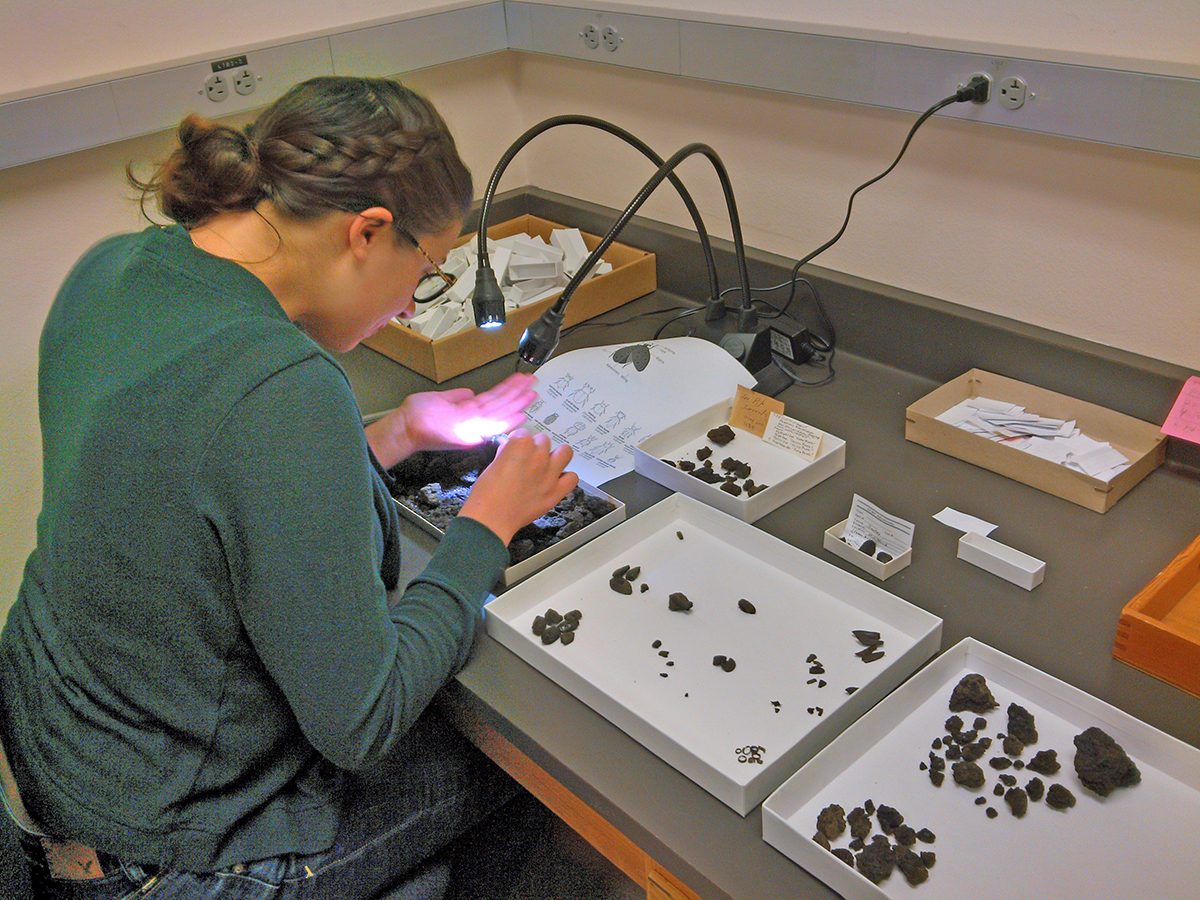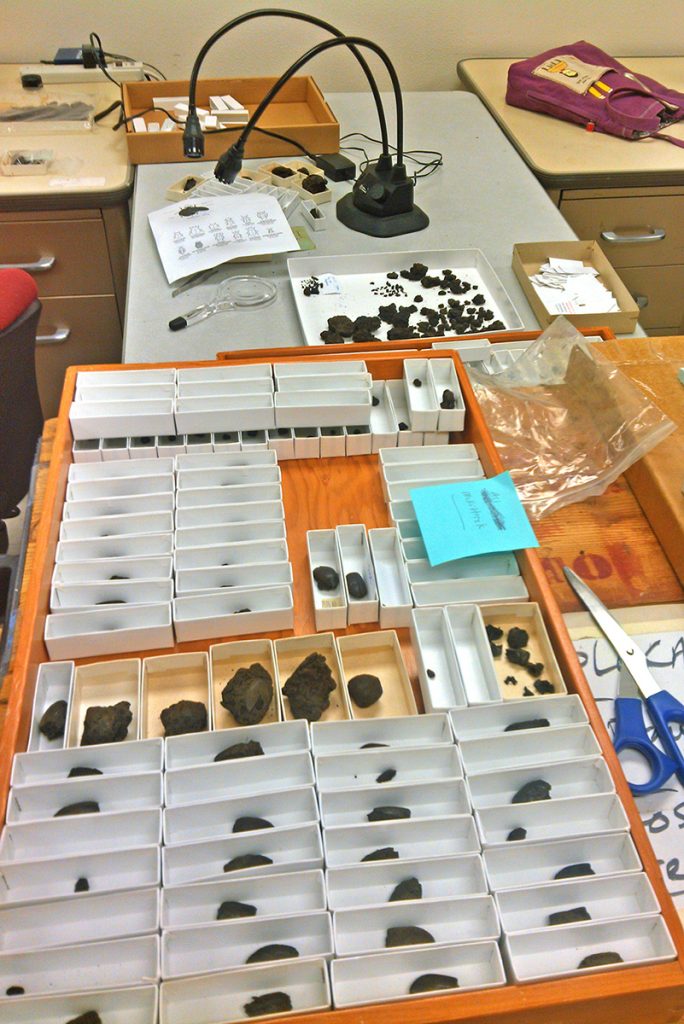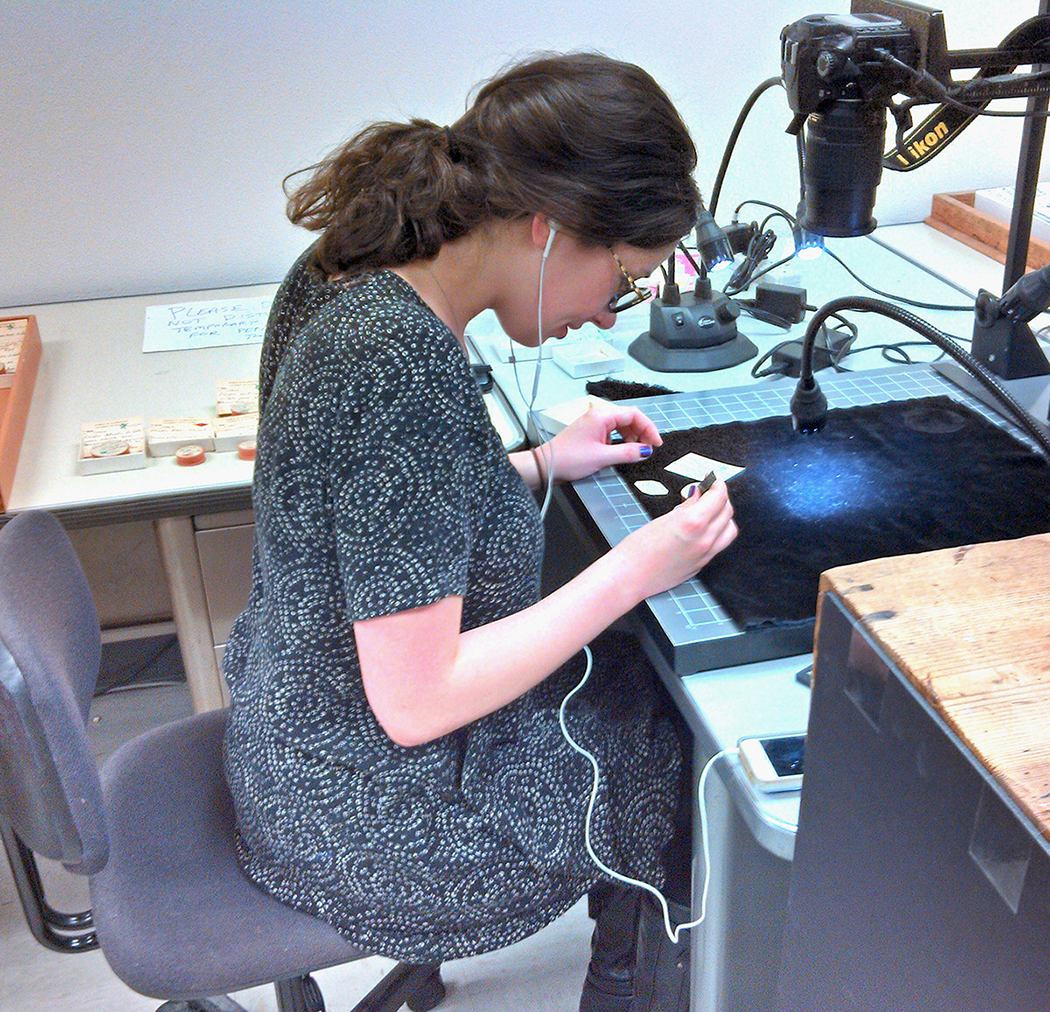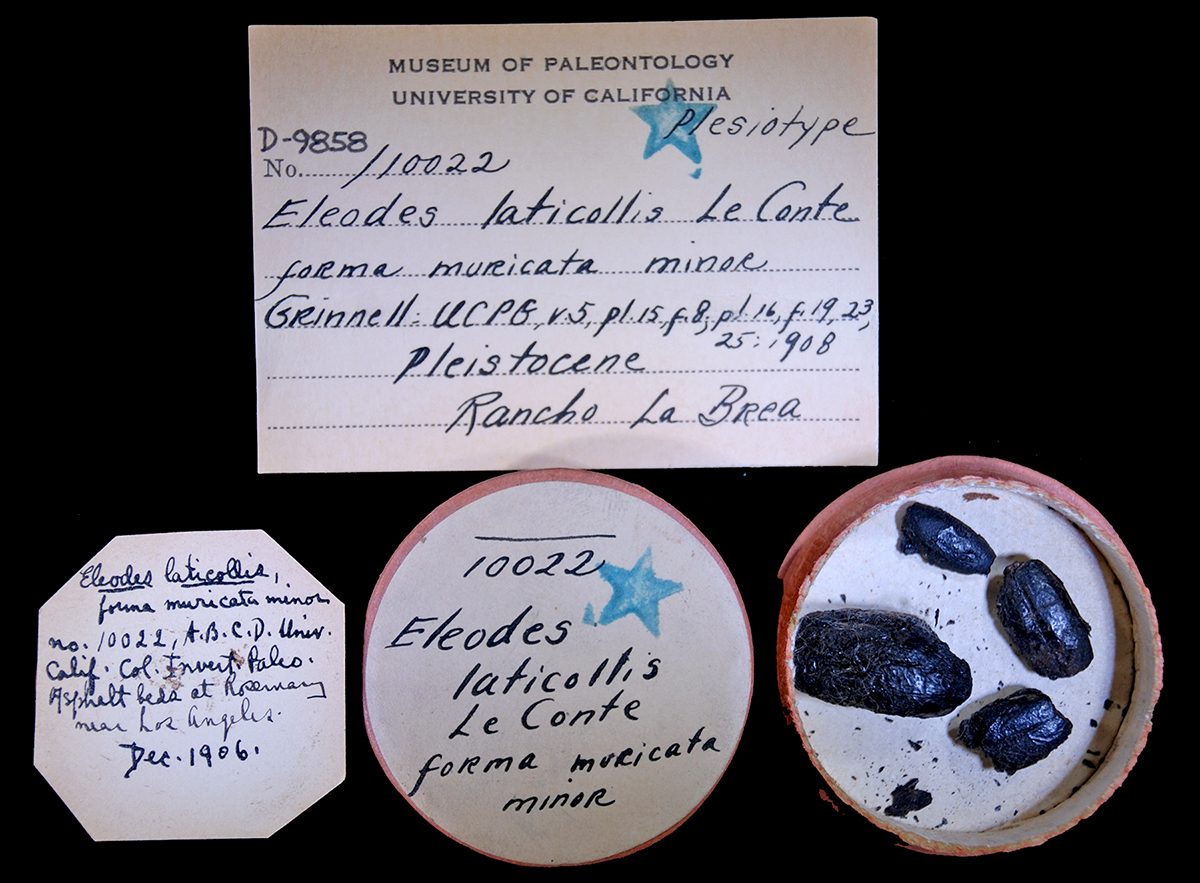Meschelle Thatcher’s UCMP undergraduate research experience: Beetles in Brea!

As an English major, I didn’t really know what to expect when I first started my URAP (Undergraduate Research Apprenticeship Program) appointment for the UC Museum of Paleontology Fossil Insect PEN (Partner to an Existing Network) funded by the National Science Foundation. All I knew was that I’d be handling fossils, and that struck the scientific chord in my imagination in perfect harmony.

The Pleistocene Rancho La Brea tar pits in southern California are best known for their extinct exotic animals. However, I’ve learned there is more life in these asphalt seeps than saber-toothed cats, dire wolves, sloths, mastodons and camels. As part of my URAP experience I’ve been sorting the remains of beetles from the asphalt seeps at Rancho La Brea in Los Angeles and those near McKittrick, CA, in the southern San Joaquin Valley. Again, coming from a Humanities-oriented framework, I was slightly overwhelmed when my supervisor, Senior Museum Scientist, Diane Erwin, told me to pull out all the beetles I could find from bulk samples of asphalt recently discovered in the collection that had not yet been catalogued. Surely I was capable of spotting beetles, but I found myself wondering if I should also put aside things that look like legs, fragments of elytra and other beetle body parts? What if these beetle remnants should somehow alter the course of science forever? Ultimately, I found out that these anatomical fragments were indeed cute, but it wasn’t necessary to catalog them as individual specimens. Although not deserving of their own photo shoot, I learned they would be gathered for a group photo.
Fast forward to this lovely week in April, and I now have plenty of whole beetles really worth looking over. While most of them were easy to spot with the naked eye, I sometimes had to use a 10x magnifying glass to find the really small ones mixed in with the asphalt—the struggle with which I am positive any real paleontologist will identify. Undoubtedly, analyzing these fossils via zoomed in images of them will be particularly helpful. After all, the naked eye can only see so much. And when some of the beetle remains are just a few millimeters in size, we wholeheartedly welcome technology to swoop in and save the day…so long as we get the credit for our discoveries.

I have also helped with the imaging of the UCMP type specimens from Rancho La Brea and uploaded several dozen photos of the McKittrick beetles in the effort to digitize the diverse fossil insect collection at UCMP. By doing so, researchers, teachers, students, as well as citizen scientists and interested public all over the world will literally have accessible data at their fingertips to study. The Rancho La Brea type specimens, described and illustrated over 100 years ago, are a wonderful example of how the digitization age is allowing us to see these old collections in a new light.

As I move forward in life, such experiences will continue for me as a lifelong learner with interdisciplinary interests.